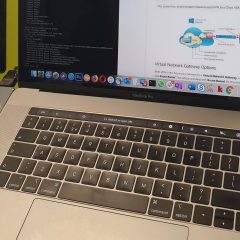Fusion Windows 11 ARM – Network Driver Missing
Fusion Windows 11 ARM KB ID 0001910 Problem: Fusion Windows 11 ARM I finally got annoyed with my Windows 11 ARM Insider Preview, nagging me to replace it, So I installed the latest version of Broadcom Fusion (13.6.3 itself quite a task!) Downloaded the latest version of Windows 11 ARM, and ran the installer, to get this. Normally, I’d take the ISO and inject the driver directly, but there’s an easier solution. Solution :...
VMware Fusion: Not Enough Physical Memory
KB ID 0001715 Problem I upgraded to macOS Big Sur this week, and was surprised everything still worked! That was until I tried to start up my Windows 1o Virtual machine. “Not enough physical memory is available to power on this virtual machine with its configured settings.” Solution Though it took me a while to ‘fix’, the fix is quite straight forward, I was running version 11 (see Below). As soon as I upgraded...
Windows In VMware Fusion ‘Cannot Access Shared Folders’
KB ID 0001627 Problem Every so often I have a problem with the Windows 10 VM that I run on my mac in VMware Fusion, last time I needed to upgrade to Fusion 11.5, before that it was a registry fix. This time I could not access any files or folders on the parent mac. Network Error Windows cannot access \\vmware-host\Shared Folders\{Folder-Name} You do not have permissions to access \\vmware-host\Shared Folders\{Folder-Name}. Contact...
VMware Fusion on macOS Mojave: No Mouse or Keyboard
KB ID 0001523 Problem While building my new MacBook, I installed VMWare Fusion, (I always run a Windows VM, in case I have to do something on Windows). But no matter what version I tried to install, I could not interface with the VMs, (no mouse or keyboard). I ran Fusion 11 on my old MacBook, (running Mojave). So I was a bit confused. Solution Click the ‘Apple’ (top left) > System Preferences > Security and Privacy...
VMware Fusion: Guest VM ‘Lost’ Network Connectivity
KB ID 0001450 Problem I keep a Windows 10 VM on my laptop, and last week it lost network connectivity, (it’s set to get its IP from my mac and get network connectivity via NAT). The guest was getting a 169.254.x.x APIPA address so either NAT was down, or there was no network? Solution You need to ‘Restart’ the services on the Mac host machine. Execute the following two commands;...




